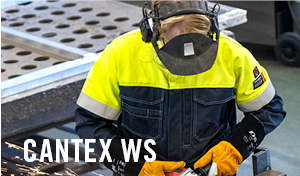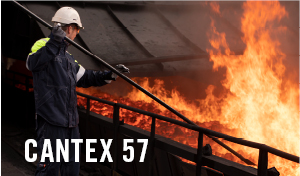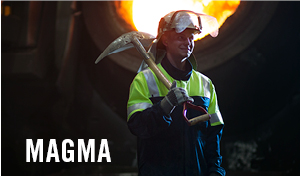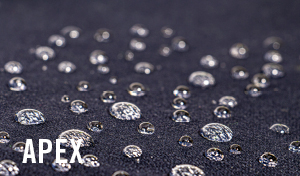

SMELTERS AND FOUNDRIES
The working environment in smelting plants and foundries often involves high temperatures, intense radiant heat and the risk of splashing molten metal. To meet these risks, category III PPE clothing is usually needed. To avoid injuries, Flame Retardant clothing that meets EN ISO 11612 is required, and depending on the type of metal used, protective clothing must also be certified to the correct code letter.
RISK ASSESSMENT
- Splashes of molten metal
- Flame & Heat
- Heat stress
- Electric Arc (limited)
- Traffic accidents (limited)
RISK EVALUATION
Molten metal sticking to a garment can cause burns. To minimise this risk, the EN ISO 11612 D and E defines some design requirements, such as closed pockets and hidden metal parts due to the fact that metal will conduct heat. Heat stress is also a risk in these environments. To block the radiant heat and increase protection, a Tranemo Skinsafe™ system of 2 or 3 layers is recommended. The air gap between the layers protects the wearer from heat and energy. Many of the Tranemo garments also include some kind of visibility to avoid traffic related accidents.
Iron and steel
When working with molten iron or steel, you need garments certified according to EN ISO 11612 E1-E3 - where E3 is the highest level. If the fabric resists molten iron and this doesn’t stick to the surface, it will normally also be acceptable for use against molten copper, molten phosphor bronze and molten brass.
Aluminium
For melters and re-melters working with molten aluminium, you need garments according to EN ISO 11612 D1-D3 - where D3 is the highest level. If the fabric resists molten aluminium and this doesn’t stick to the surface, it will normally also be acceptable for use against molten aluminium bronze and molten metals.
Zinc
Zinc challenges PPE clothing in a very special way as it sticks to most fabrics. Tranemo Apex range has an outer layer in Aramid that will not break open - even if the zinc sticks to the fabric. To block the radiant heat and increase protection, Apex also features double layer fabric to the front of the jacket and trousers. When working with molten zinc, you need garments certified at least according to EN ISO 11612, made in a fabric that has higher degradation temperature than 420°C (melting point of zinc)
Other metals
Other metals and alloys have different melting temperatures, viscosity and production processes that will challenge the PPE / clothing in different ways.
If you are working with other molten metals, please ask Tranemo for advice in finding the correct solution for your business.





